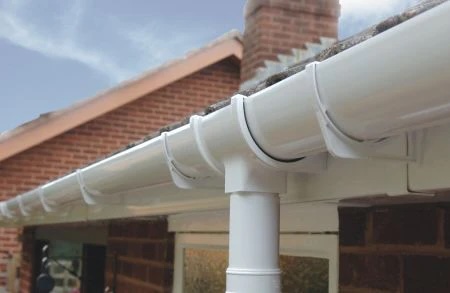
Roof Drainage
Add a review FollowOverview
-
Sectors Mercadeo
-
Posted Jobs 0
-
Viewed 16
Company Description
See What Gutter Replacement Tricks The Celebs Are Using

Gutter Replacement: Why, When, and How to Do It
Gutters play an important role in the stability of a home’s exterior, directing water away from the roof, walls, and structure. However, as with any part of a house, gutters can break gradually, leading to the requirement for replacement. This short article aims to supply homeowners with detailed information regarding gutter replacement, consisting of indications of wear, different kinds of gutters offered, replacement procedures, and FAQs to assist make informed decisions.
Comprehending Gutters and Their Importance
What are Gutters?
Gutters are narrow channels that run along the edge of the roof. They gather and direct rainwater away from the house to prevent water damage. Appropriately operating gutters assist to:
- Prevent basement flooding
- Protect siding and windows
- Protect landscaping
- Prevent mold development
Why is Gutter Replacement Necessary?
Gutters can struggle with various problems gradually due to direct exposure to the elements. Their products can wear away, obstruct, and even break due to serious weather condition conditions. Regular assessments can help to recognize when they need to be repaired or replaced.
Indications You Need Gutter Replacement
Determining the signs that indicate it’s time to replace your gutters is vital. Here are some typical indicators:
Visible Damage
- Cracks and Holes: Look for noticeable cracks or holes that may cause leaks.
- Rust or Corrosion: This is particularly typical in metal gutters.
- Separation from your home: Gutters should be safely fastened; if they are retreating, it might indicate a structural problem.
Functional Problems
- Overruning Gutters: If water spills over the sides throughout heavy rain, this might show a blockage or structural failure.
- Water Damage: Signs of water damage on walls and ceilings suggest that water is not being diverted far from the home effectively.
Landscaping Issues
- Erosion and Pooling Water: If soil disintegration or pooling near the foundation is obvious, the gutters might not be funneling water effectively.
Sagging or Angle Issues
- Gutters need to preserve a slight slope to aid in drainage. If they appear to be drooping or uneven, they might require changing.
Kinds of Gutters
When it pertains to replacing gutters, house owners have numerous options. Comprehending the different types can help in making an educated option:
| Type of Gutter | Description | Pros | Cons |
|---|---|---|---|
| Vinyl Gutters | Made from PVC; light-weight and affordable | Affordable, rust-proof | Can end up being fragile in extreme weather |
| Aluminum Gutters | Light-weight and resistant to rust | Flexible colors and styles | May damage easily |
| Steel Gutters | Durable alternative; suitable for severe conditions | Strong and lasting | Much heavier and susceptible to rust |
| Copper Gutters | Expensive; visually pleasing | Extremely durable, develops gorgeous patina | High installation and product expense |
| Seamless Gutters | Custom-fitted without joints | Decreases leaks, less maintenance | Needs professional installation |
The Gutter Replacement Process
Replacing gutters can be a straightforward DIY job, or it can require professional support, depending on the property owner’s skill level and safety factors to consider. Here’s a step-by-step guide to gutter replacement:
Step 1: Gather Necessary Tools and Materials
List of tools and products to have on hand:
- New gutters (select the type)
- Gutter hangers
- Screws and anchors
- Drill
- Ladder
- Security safety glasses
- Level
- Determining tape
- Caulk
Step 2: Remove Old Gutters
- Carefully remove existing gutters from roof and fascia, ensuring that no damage happens to adjacent structures.
- Dispose of any particles and old gutters properly.
Action 3: Measure for New Gutters
- Properly measure the length of each side of the roof to ensure the brand-new gutters fit correctly.
Step 4: Install New Gutters
- Set up the gutter wall mounts with a small slope towards the downspouts.
- Protect the gutters in location, consulting a level to maintain the right angle.
Step 5: Attach Downspouts
- Cut areas of downspout to length and protect them to the gutters and the wall of your home, ensuring they direct water away from the foundation.
Step 6: Test for Proper Function
- Run water through the gutters to guarantee they are draining appropriately and look for leakages.
Frequently Asked Questions About Gutter Replacement
1. How often ought to gutters be replaced?Gutters can last between 20 to
50 years, depending upon material and maintenance. Routine inspections can help determine when replacement is required. 2. Can I change gutters myself?Yes, if you have
the right tools and feel comfortable
working at heights. However, employing professionals is a good idea for security reasons and to ensure correct installation. 3. What takes place if I do not change my gutters?Neglecting gutter replacement can result in significant
water damage, mold development, and expensive repairs to the home’s foundation. 4. Are seamless gutters worth the investment?While they might cost more upfront, seamless gutters reduce the risk of leakages and need
less maintenance, making them a worthwhile investment. 5. How do I maintain my brand-new gutters?Regular cleaning to eliminate debris, inspecting for clogs, and checking for damage after severe weather condition will extend the life of your gutters. Changing gutters is a vital aspect of home
maintenance that straight influences the longevity and security of the home. By recognizing the signs of wear, comprehending the kinds of gutters
readily available, and following the replacement process, house owners can safeguard their residential or commercial property from water damage effectively. Given the importance of appropriately functioning gutters, timely replacement can save property owners significant expenses and ensure a safe living environment.